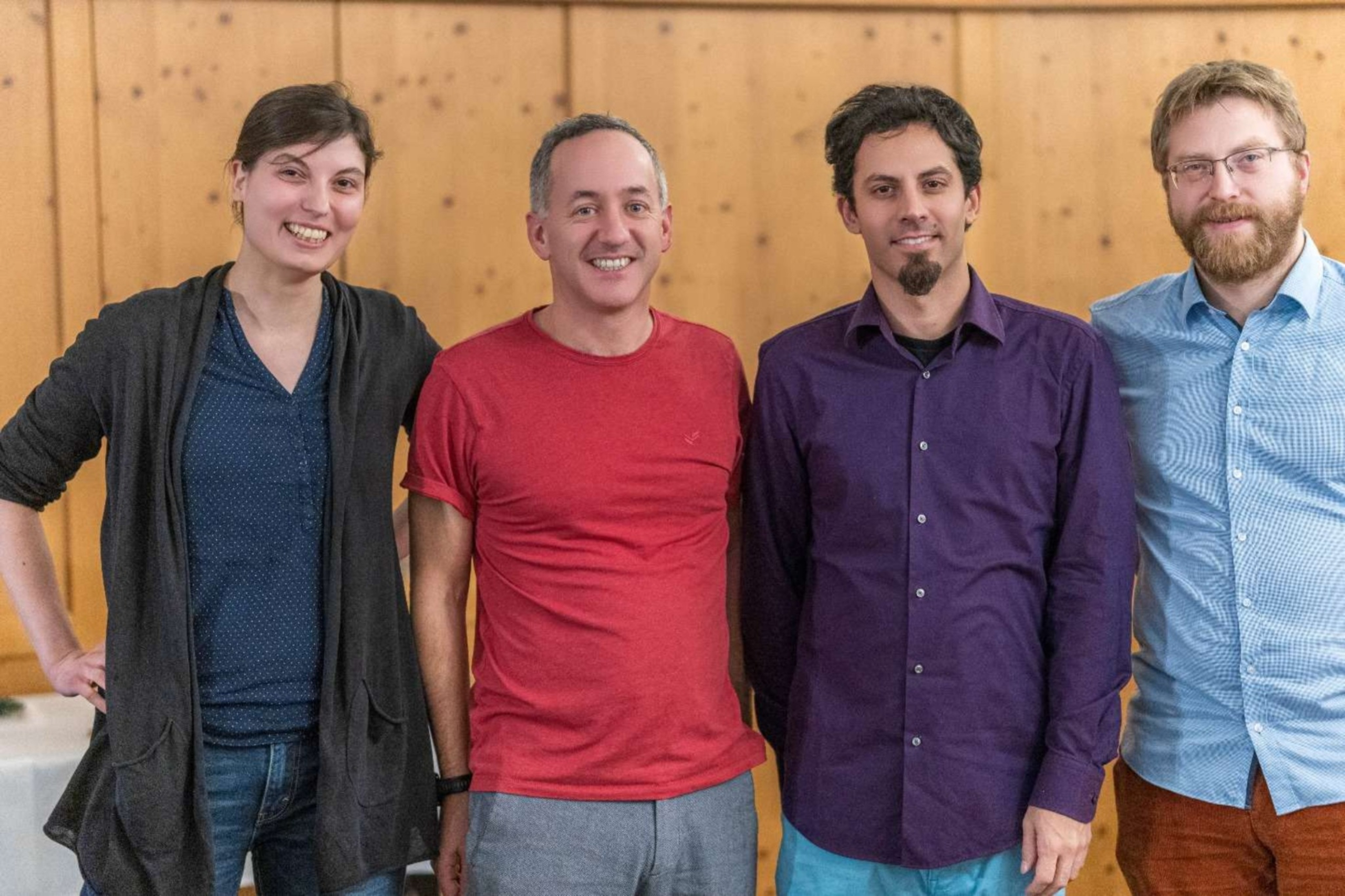Sisyphus Team (© Sisyphus)
Decarbonization is one of the biggest issues of our time. At TU Wien, Sisyphus developed a catalyst technology that recycles CO2 into useful products. This technology enables the development of a more efficient process to produce green fuels and chemicals.
Sisyphus‘ technology thus has the potential to address a very large market that is currently in transition from fossil to renewable fuels. At the same time, it provides an important basis for making progress on our path to net-zero emissions.
Rudolf Sallinger Fonds: Last year, you won the Brutkasten prize at the S&B Award 2022. How has Sisyphus developed since then?
Tom Cotter: When we applied for the award, we had basically a small proof of concept in the lab. We have now demonstrated the catalyst at a pilot scale at close to industrial conditions. In this phase, we have been working on the European Research Council’s Proof of Concept where we successfully achieved the objectives. We are currently hoping to hear back from grant applications we have made in the last months in order to move forward to the next step, which is establishing a demonstration technology.
We are now a spin-off of the Montanuniversität Leoben, but I would like to emphasize the support that we’ve been given through the TU Wien i2c incubator. It has been phenomenal, and instrumental in getting us to where we are now. Last year we were at a very early stage and did not really have an exact idea about what we were doing, what our business model would be and how we would develop it, but we had some excellent mentorship and a huge amount of support. This in parallel with the proof of concept project will help get us to the next step to develop our technology.
(How) did you already use the media volume of EUR 5,000?
Due to the very early spin-off stage, we did not yet need to utilize the prize. But we are currently planning an article with them about our next steps to work on the demonstration technology. Brutkasten has generously offered that we can commission an article with them, which will consume most of the prize. Also, if we have any additional need for media work, we can also use this budget.
Last year, you talked about the potential to address a very large market that is currently in transition from fossil fuels to renewable fuels. How did you move forward in this target market?
Regarding the market, there have been two important aspects. One was to try and understand the market and the unmet needs, and to test our business model in hypothesis testing. The other was just to monitor the state of the market with regards to legislation. On both fronts, I would say that the outlook is positive. In the meantime there are many more market players and it is becoming a heated competition. We see first commercial plants being built in the range of 10.000-15.000 t per year. This will really start to take off at the end of the decade and it is in line with our goal to have a market-ready technology until 2030. Regarding the development of legislation we see large announcements from the EU related to the Fit for 55 program. The ReFuelEU mandates for use of sustainable aviation fuels (SAFs) are now in place and will ensure the growth of both biofuels and CO2 based fuels beginning in 2025.
Regarding our business model, we had a number of interesting discussions with various players in our ecosystem to understand how they are working with early-stage companies. The technology need is there, and so far we have had positive feedback from potential customers on our value proposition.
Have you already been able to gain industrial partners for the further development of your CO2 upcycling process?
We have early-stage partners who are committed to working together on a funded project to support the scaling of our technology. This includes scaling up and producing material, but also to help us to design and demonstrate our process in the future. I cannot share the names now without their permission, but we will be working with them in the next year as we develop, and we are also looking for further partners and potential customer that we can collaborate with at the demonstration scale.
What entrepreneurial goals have you set yourselves for 2024? What are the next steps in the further development of Sisyphus?
In the next 18-24 months, the goals are very much towards developing the MVP concept and proving the process design using simulation and pilot testing. This basis will be used subsequently to scale and deliver a demonstration unit (our MVP) which will be realized upon founding. During this next year we will work together with potential customers and early adopters to refine the system and the process we are developing together.
In addition, we will scale up the catalyst further with our partner to have a robust material that is sufficient for commercial demonstration and for being production-ready in future. This core material technology will be used to develop the Sisyphus process for CO2 conversion and stand as a basis for further innovation.










